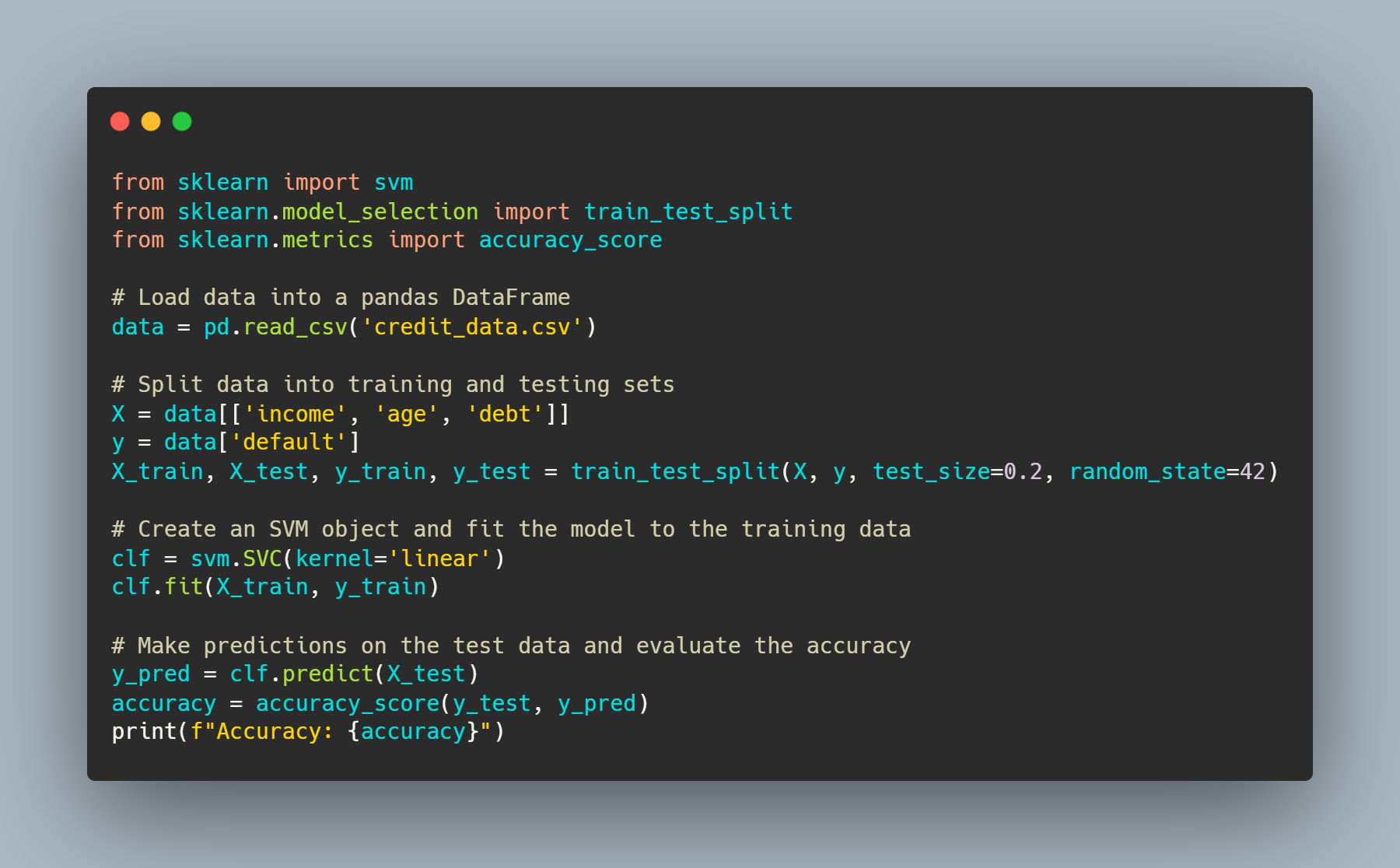Thread
Support Vector Machine (SVM) is a powerful machine learning algorithm used for classification and regression analysis.
Let's take a closer look at SVM and its real-world use cases.📈👩💻
Let's take a closer look at SVM and its real-world use cases.📈👩💻
1/ What is SVM?
SVM is a supervised learning algorithm that analyzes data for classification and regression analysis.
It tries to maximize the margin between classes by finding the best decision boundary that separates the data points into two or more classes.
SVM is a supervised learning algorithm that analyzes data for classification and regression analysis.
It tries to maximize the margin between classes by finding the best decision boundary that separates the data points into two or more classes.
2/ How Does it Work?
SVM works by transforming the input data into a higher dimensional space, where it's easier to separate the data into different classes.
The algorithm then identifies the optimal hyperplane that maximizes the margin between the classes.
SVM works by transforming the input data into a higher dimensional space, where it's easier to separate the data into different classes.
The algorithm then identifies the optimal hyperplane that maximizes the margin between the classes.
3/ Use-Cases in the Real World:
• Image Classification: SVM can be used to classify images based on their features, such as color, texture, and shape. For example, it can be used to classify handwritten digits in optical character recognition systems.
• Image Classification: SVM can be used to classify images based on their features, such as color, texture, and shape. For example, it can be used to classify handwritten digits in optical character recognition systems.
• Text Classification: SVM can be used to classify text data into different categories, such as spam or ham. It can also be used for sentiment analysis to determine the sentiment of text data, such as positive or negative.
• Finance: SVM can be used for credit risk analysis, fraud detection, and stock price prediction.
4/ Implementation:
To implement SVM in Python, we can use the scikit-learn library. Here's a sample code snippet:
To implement SVM in Python, we can use the scikit-learn library. Here's a sample code snippet:
5/ Conclusion:
SVM is a powerful algorithm with various real-world applications. By understanding its workings and applications, you can leverage its capabilities to solve complex problems in your field of work.
SVM is a powerful algorithm with various real-world applications. By understanding its workings and applications, you can leverage its capabilities to solve complex problems in your field of work.
Join FREE Auto EDA and Advanced Data Frame Querying workshop with @DataKwery
Click the link below to sign up
us02web.zoom.us/webinar/register/4416769414682/WN_Kdz5k4LfR16Bsk5n2l2GpA
Click the link below to sign up
us02web.zoom.us/webinar/register/4416769414682/WN_Kdz5k4LfR16Bsk5n2l2GpA
Learn about the TOP 10 ML algorithms from
@DataKwery with their use cases 🙌👍
Click the link below to learn more👇
www.datakwery.com/post/top-10-ml-algorithms-with-use-cases/?utm_source=avi&utm_medium=blog
@DataKwery with their use cases 🙌👍
Click the link below to learn more👇
www.datakwery.com/post/top-10-ml-algorithms-with-use-cases/?utm_source=avi&utm_medium=blog
End of this thread!👍
If you've found it informative then do like, RT/QT first tweet, and comment what you think on this💬
And Don't forget to follow me at @avikumart_ and @DataKwery for more updates🔥👍
If you've found it informative then do like, RT/QT first tweet, and comment what you think on this💬
And Don't forget to follow me at @avikumart_ and @DataKwery for more updates🔥👍
Mentions
See All
Sumanth @Sumanth_077
·
Mar 2, 2023
A Detailed thread on SVM. Great share

